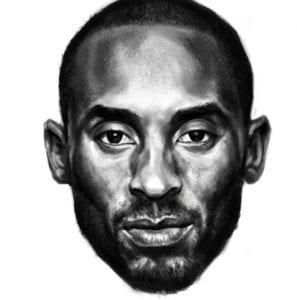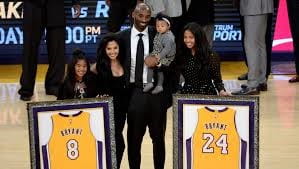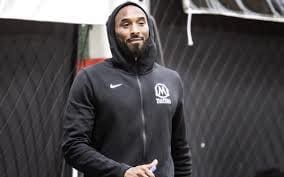By: Jonathan Angulo
Viva Kennedy, Lyndon B. Johnson, Barack Obama, and Bernie Sanders!
A Brief History of Organizing and Mobilizing the Latina and Latino Vote

Photos Courtesy of Wikipedia

Photo Courtesy of pressdemocrat.com
On February 3rd, the Iowa Democratic Party held the first caucus of the Democratic 2020 primary. Caucuses are notoriously “messy” because they require voters to remain within enclosed locations for hours while votes are tallied. However, Iowa introduced satellite caucuses this year which allowed voters to participate in the election process without being physically present. The Sanders’ campaign recognized that this innovation provided an extraordinary opportunity for mobilizing the critical yet often overlooked Latina/o vote. The decision to engage this electorate with satellite voting secured the popular vote in Iowa for Sanders and placed him in a distinguished group of past presidential candidates who wisely assessed the Latinx vote as critical in their quest of obtaining the highest office in the country.
JFK and LBJ
In 1960, Mexican Americans supported John Fitzgerald Kennedy’s campaign with a statewide partisan organization, Viva Kennedy. Ethnic Mexicans overwhelmingly supported JFK when he began to meet with leaders from the G.I. Forum—a Mexican American veteran organization. In 1959, his staff met with Hector P. Garcia, the forum’s founder, to organize Spanish-speaking populations. Thus, the Viva Kennedy drive arose. Ethnic-Mexicans also supported JFK because of the Democrats’ 1960 platform. Its agenda called for civil rights, school desegregation, fair housing, and voting rights. The campaign proved to be successful. Kennedy won 85 percent of the Hispanic national vote and 91 percent of it in Texas. The President-elect vowed to appoint more Hispanics—at the time Mexicans were referred to as Hispanics; today they are also referred to as Latina/o—to his administration. Despite this promise, the President failed to appoint Spanish-speaking people to significant political positions.

Courtesy of Button Museum
Lyndon B. Johnson’s relationship with ethnic-Mexicans allowed him to continue the political association with them that Kennedy established. Before becoming Vice-President in 1960, LBJ was a Texan congressman and senator. Johnson began his career teaching ethnic-Mexican students in the town of Cotulla, Texas. There he witnessed the lack of education and economic opportunities that ethnic-Mexicans endured. Upon his first Senatorial term, he organized the burial of a Mexican American veteran, Felix Longoria, at the Arlington National Cemetery. A funeral home in Three Rivers, Texas refused to bury the veteran due to segregationist beliefs. Longoria’s funeral motivated other ethnic-Mexican communities, like those in Cotulla, to fight for integrated cemeteries. When Johnson ran for president in 1964, ethnic-Mexicans knew that LBJ had been present during tough moments for members of their community, and they supported his successful campaign for the presidency.
Ultimately, Johnson’s presidential administration delivered material gains for Spanish speaking people like the Civil Rights Act of 1964, the Immigration and Nationality Act of 1965, the Voting Rights Act of 1965, the Elementary and Secondary Education Act of 1965, the Economic Opportunity Act, and Medicare in 1966. Despite these accomplishments, the legacy of LBJ is somewhat undermined by his choice to side with agribusiness interests against ethnic-Mexicans, the Vietnam War (LBJ’s administration disproportionately sent ethnic-Mexicans to fight), and his reluctance to appoint Hispanic members to senior positions.
George W. Bush and Obama
Four decades later, between 2008 and 2016, President Obama improved the lives and status of Latinas and Latinos within the United States. The Great Recession between 2007 and 2009 decreased the wealth of Latina/os by 66 percent. Obama’s administration worked to decrease unemployment which helped the community acquire some of their lost fortunes. President Obama also made sure to appoint Spanish-speaking officials within his administration. Notably, he appointed the first Latina, Sonia Sotomayor, to the Supreme Court. Additionally, in 2009, he appointed Hilda Solis as the first Latina Secretary of Labor and when she left the position in 2013, Tom Perez replaced her.
While his administration kept major promises to the Latina and Latino community, Obama’s record on immigration was more controversial. Obama allowed the United States’ legitimate concerns regarding terrorism sway him towards hyper-vigilant — and arguably unnecessary –support for deportation.
Before the Twin Tower attacks on September 11, 2001, undocumented immigrants were temporarily allowed to remain in the country if they were married to a citizen or if their children were U.S. citizens. However, this changed once President George W. Bush led the country into war against major nations in the Middle East—formerly known as the War on Terror. Although the Bush administration attempted to use the War on Terror as a means for protecting the citizens of the United States from further terrorist attacks, this conflict led to stronger national and border security initiatives. As a result, Bush’s administration created the Immigration and Custom Enforcement Agency (ICE) in 2003 which paved the way for the separation of families with mixed immigration statuses.
ICE began to deport more immigrants, and by 2012, the Obama administration continued the practice of the Bush administration by expelling 400,000 undocumented immigrants, 90,000 of which were undocumented parents of U.S. citizens. In 2014, the Obama administration’s record of deportation led the country’s largest Latino organization — the National Council of La Raza and its president, Janet Murguía — to identify Obama as the “deportation president.” Many of those who were deported were part of the Latina and Latino community.
Activists and the Obama administration worked together to provide benefits to the undocumented community after immigration reform failed in 2010 due to a bipartisan coalition of Senate Democrats and Republicans voting against immigration reform. This had been the case since 2001, and undocumented immigrants who came to the US as children—Dreamers—continued to fight for progress. Their initiatives proved to be successful when, on June 15, 2012, Obama’s Department of Homeland Security determined that it would not deport individuals who were brought to the U.S. as children under an undocumented status.
That same year, the President signed an executive order—Deferred Action for Childhood Arrivals (DACA)—which established that some undocumented immigrants could apply for a driver’s license, open a bank account, and would not be deported as long as they continued to renew their status. Individuals were eligible as long as they were sixteen or under 31 years of age, resided in the U.S. before June 15, 2007, had graduated from high school or were enrolled in a school, and had not been convicted of a felony. DACA therefore protected families from being separated. This initiative significantly impacted the Latina and Latino community as some came to the U.S. under an undocumented status to work in sectors like construction, hospitality, and agriculture.

Courtesy of Univision
Bernie Sanders and the 2016/2020 Democratic Primary
Between 2015 and 2016, Bernie Sanders and Hillary Clinton campaigned against one another for the Democratic nomination. Throughout the election, Sanders enhanced his relationship with Latina/os and was challenged for his previous stances. Sanders infamously voted against Immigration Reform in 2007 arguing that bringing thousands of immigrants into the U.S. lowered wages for American workers. Additionally, organizations like the League of United Latin American Countries (LULAC) encouraged Senators to vote against the bill. LULAC argued that the legislation lacked a pathway to legal residence under its guest-worker program, eliminated numerous family-based green card classifications, and that the guest-labor initiative lacked many worker protections. One year later, in January 2008, Bernie traveled to Immokalee, Florida, to witness the working conditions of tomato laborers.
After two months, the Senator convinced his peer Senator Ted Kennedy (D-MA) to hold a press conference regarding the conditions of these workers. Two years later, the laborers, employers, and tomato purchasers agreed to increase tomato pound rates, improve working conditions, introduce health and safety programs, and make it easier to address complaints of sexual abuse. While Politifact states that Sanders did not entirely ensure these outcomes, his visit to Immokalee placed a spotlight on the workers’ issues who were undocumented and people of color.
The Senator’s campaign created an ad about the event which resonated with the community during the 2016 campaign. Despite this, Sanders lost ten out of eleven states where Latina/os made up much of the population. Since 2016, some of Sanders primary platform issues such as a single-payer health care program and tuition-free colleges/ universities reverberated with Latinas and Latinos. Yes, immigration policy is important to the Latinx community, but so is health care and education.
In 2019, Sanders decided to seek the 2020 Democratic nomination and has continued to solidify his relationship with Latina/os. For example, Bélen Sisa—a dreamer—has become the deputy press secretary for his team. Additionally, Sanders also hired Chuck Rocha-an ethnic-Mexican Texan—as his Senior Policy Advisor. Moreover, Carmen Yúlin Cruz, the mayor of San Juan, Puerto Rico, became a co-chair for the Senators’ team. Throughout the campaign trail, Bernie has spoken at the National Association of Latin Elected Officials (NALEO) and the League of United Latin American Countries (LULAC). His appeal to the community has motivated supporters to create the group, Unidos Con Bernie. There is even a shirt on the campaign store that reads, “Tío Bernie” (Uncle Bernie). Additionally, The New York Times reported that Sanders polls well with Latina/o voters. Additionally, a Texas Lyceum Survey stated that the Senator garners 36 percent of the Hispanic vote.

Courtesy of Latino Magazine
Sanders was able to close his electoral deficit in the 2020 Iowa caucus because of his collaboration with Latinas and Latinos. The state had four Spanish-language satellite caucuses, and the Senator almost unanimously won them. Out of the 442 votes in the sites, Bernie’s campaign acquired 428 of them. This accomplishment would not have occurred without the help of volunteers like Marlén J. Mendoza who was one of the precinct captains in a satellite caucus. Throughout mass-Latina/o neighborhoods in Iowa, Bernie won 66.5 percent of the vote.

Courtesy of The Intercept
On February 20th, the Senator’s campaign won a decisive victory in the Nevada caucus because of Latina/o support. The official results reported that Bernie won 46.8 percent of the general electorate. According to entrance polls, he won 51 percent of the Latino vote and placed a strong second with African American voters. 27 percent of the African American community supported the Senator, and 39 percent voted for Vice-President Joe Biden.
After Super Tuesday, March 3, 2020 where fourteen different states voted, Joe Biden effectively beat Sanders in ten states while Sanders won crucial elections with large Latina/o electorates. The vice-president won Alabama, Arkansas, Maine, Massachusetts, Minnesota, North Carolina, Oklahoma, Tennessee, and Texas due to his strong African American support and endorsements from ex-presidential candidates Beto O’Rourke, Amy Klobuchar, and Pete Buttigieg. Additionally, Biden’s strong finish in South Carolina and Democratic House Majority Whip Jim Clyburn’s endorsement gave him a strong momentum leading up to Super Tuesday. However, Bernie Sanders won Colorado, Utah, Vermont, and California. According to California exit polls, the Senator won 49 percent of the Latina/o vote. Sanders narrowly lost to Biden in Texas by a 4.5 percent difference, but he won 45 percent of the Latina/o vote in that state.
As some of his predecessors who sought the presidency, Bernie Sanders’ is making a collective effort that engages, understands, and organizes the Latina/o community. Numerous states have voted in the 2020 primary cycle; nevertheless, Latinas and Latinos will continue to make their voices heard. As a Mexican American, I am convinced that even if Sanders does not win the nomination, the Latinx community will make sure that future candidates and administrations continue to listen to us. We are a growing demographic, and politicians who sincerely fight for health care, the environment, education, criminal justice reform, immigration, and affordable housing will have our vote.





































